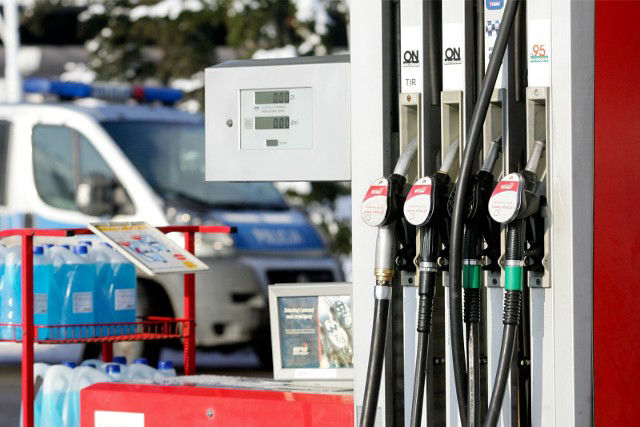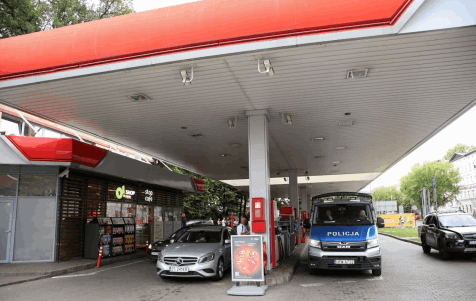Fleet Fueling Safety: Tips to Keep Your Team Safe


Fueling a fleet of vehicles is a routine but critical operation for many businesses, especially those in transportation, delivery, and construction industries. Despite its daily familiarity, fleet fueling comes with inherent risks—ranging from fire hazards to chemical exposure and environmental spills. Establishing solid safety practices is essential not only for compliance with regulations but also for protecting your team and ensuring operational continuity. When safety becomes an integral part of the fueling process, businesses can reduce accidents, avoid costly downtime, and build a culture of responsibility and care.
Understanding the Risks of Fleet Fueling
Fleet fueling involves handling highly flammable substances in various environments, often outdoors or at locations without full safety infrastructure. Gasoline, diesel, and other fuels can ignite with only a small spark or heat source. Additionally, repeated exposure to fuel vapors can be harmful to workers’ health. Fuel spills, whether small drips or large leaks, pose serious environmental threats and can lead to heavy fines and reputational damage.
Because of these risks, it’s critical that companies treat fueling not just as a logistical task but as a process that demands attention to detail, proper training, and consistent monitoring.
Training as the First Line of Defense
One of the most effective ways to improve fleet fueling safety is to ensure that all employees who handle fuel are properly trained. This training should cover the correct procedures for fueling various types of vehicles, understanding how to operate fueling equipment, and recognizing the signs of potential issues such as leaks or vapor buildup.
Employees must be made aware of the proper use of personal protective equipment (PPE), such as gloves and goggles, and they should know what to do in the event of a spill or fire. Training sessions should be held regularly, especially for new hires and when introducing new fueling technology or procedures.
Maintaining Equipment and Fueling Stations
Another vital component of fueling safety is maintaining the fueling equipment and infrastructure. Pumps, hoses, tanks, and nozzles need to be inspected frequently for signs of wear, damage, or leaks. Damaged equipment can not only disrupt fueling operations but can also create immediate safety hazards.
It is important to establish a preventative maintenance schedule and ensure that all maintenance activities are properly documented. In addition to maintaining equipment, businesses should also ensure that fueling areas are kept clean, well-lit, and free of debris or clutter that could obstruct the safe movement of vehicles and personnel.
Implementing Clear Fueling Procedures
Consistency plays a major role in safety. Creating and enforcing standardized fueling procedures ensures that everyone follows the same steps and precautions every time. These procedures should be designed to minimize the chances of human error, such as overfilling tanks or using the wrong type of fuel.
It’s also important to have clearly posted instructions and safety signage near fueling areas. This helps reinforce the proper protocols and serves as a reminder for seasoned workers who may become complacent over time. Safety signage should include reminders to shut off engines, avoid smoking, and use grounding mechanisms where appropriate.
Emergency Preparedness and Response
Even with strict protocols in place, emergencies can still happen. Being prepared for these scenarios is key to minimizing harm and resuming operations quickly. Businesses should develop an emergency response plan specifically for fuel-related incidents. This plan should include steps for managing fires, chemical exposures, and fuel spills, as well as guidance for evacuations and contacting emergency services.
Spill kits, fire extinguishers, and first aid supplies should be readily accessible in fueling areas. All employees should be familiar with where these items are located and how to use them. Conducting drills and tabletop exercises can help reinforce these protocols and ensure that everyone knows what to do when the unexpected occurs.
Environmental Considerations in Fueling Safety
In addition to worker safety, fleet fueling also has significant environmental implications. Spills can contaminate soil and water supplies, while fuel vapors contribute to air pollution. Responsible fueling practices must therefore include environmental safeguards, such as spill containment systems, proper disposal of fuel-soaked materials, and adherence to local environmental regulations.
Businesses should also consider the long-term environmental impact of their fueling practices. Investing in cleaner fuels or alternative fueling methods can enhance safety while supporting corporate sustainability goals.
Creating a Culture of Safety
Safety doesn’t stop at checklists and procedures—it thrives in a culture where every team member feels responsible for their own safety and that of their coworkers. This culture is built through consistent messaging, supportive leadership, and recognition of safe practices.
Managers and supervisors play a pivotal role in setting the tone. When leaders prioritize safety and lead by example, team members are more likely to adopt safe behaviors. Open communication about safety concerns and regular feedback on fueling practices can also foster a sense of shared responsibility and continuous improvement.
